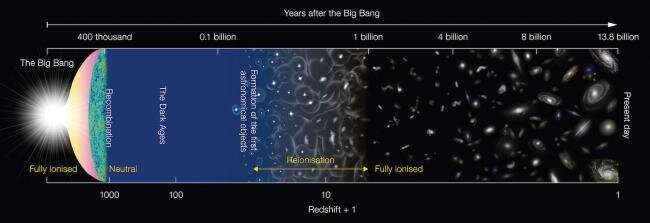#Cosmic galaxy assembly and the evolution of metals

“#Cosmic galaxy assembly and the evolution of metals”

Astronomers refer to all the elements heavier than helium as “metals,” even elements that are typically found in gaseous form. In the big bang only hydrogen and helium (and a trace of lithium) were created while the “metals” were all made subsequently in stellar processes. The abundance of metals in the interstellar medium (ISM) of galaxies—the metallicity of the galaxies—thus quantifies the collective stellar processes that govern galactic evolution. The metallicity of the gaseous phase of the ISM (excluding particulates) has been found to be closely related to the history of a galaxy’s star formation and can be determined using optical spectroscopic observations of atomic lines, especially bright ones from ionized oxygen and neon. Another pivotal process in setting the metallicity is gas flow both out of the galaxy, driven by supernovae or other processes, and into the galaxy from the intergalactic medium.
How the metallicity of galaxies has evolved over cosmic time has become one of the most interesting questions in cosmology because it traces how stars have influenced the elemental composition of the universe in the roughly thirteen billion years since they first appeared, roughly a hundred or more million years after the big bang.
CfA astronomer Mojegan Azadi is a member of team performing the MOSDEF survey, a four year program using the Multi-Object Spectrometer For Infrared Exploration (MOSFIRE) on the Keck I telescope to obtain optical spectra of about 450 galaxies in epochs from 1.7 to 4.5 billion years after the big bang. The astronomers measured the metallicity of each galaxy in the sample and concluded that many of the relations involving metallicity in the local universe also apply at these earlier times. For example, the relationship between a galaxy’s metallicity and stellar mass is about the same, as is the correlation between metallicity and star formation rate.
These important new results signal that the processes that govern the growth of the element abundances in galaxies, whether by gas flows or star formation, have held in about the same form for at least the past twelve billion years.
Less metal, more X-rays: New research unlocks key to high luminosity of black holes
Ryan L. Sanders et al, The MOSDEF Survey: The Evolution of the Mass–Metallicity Relation from z = 0 to z ∼ 3.3*, The Astrophysical Journal (2021). DOI: 10.3847/1538-4357/abf4c1
Citation:
Cosmic galaxy assembly and the evolution of metals (2021, August 2)
retrieved 2 August 2021
from https://phys.org/news/2021-08-cosmic-galaxy-evolution-metals.html
This document is subject to copyright. Apart from any fair dealing for the purpose of private study or research, no
part may be reproduced without the written permission. The content is provided for information purposes only.
If you liked the article, do not forget to share it with your friends. Follow us on Google News too, click on the star and choose us from your favorites.
For forums sites go to Forum.BuradaBiliyorum.Com
If you want to read more Like this articles, you can visit our Science category.


